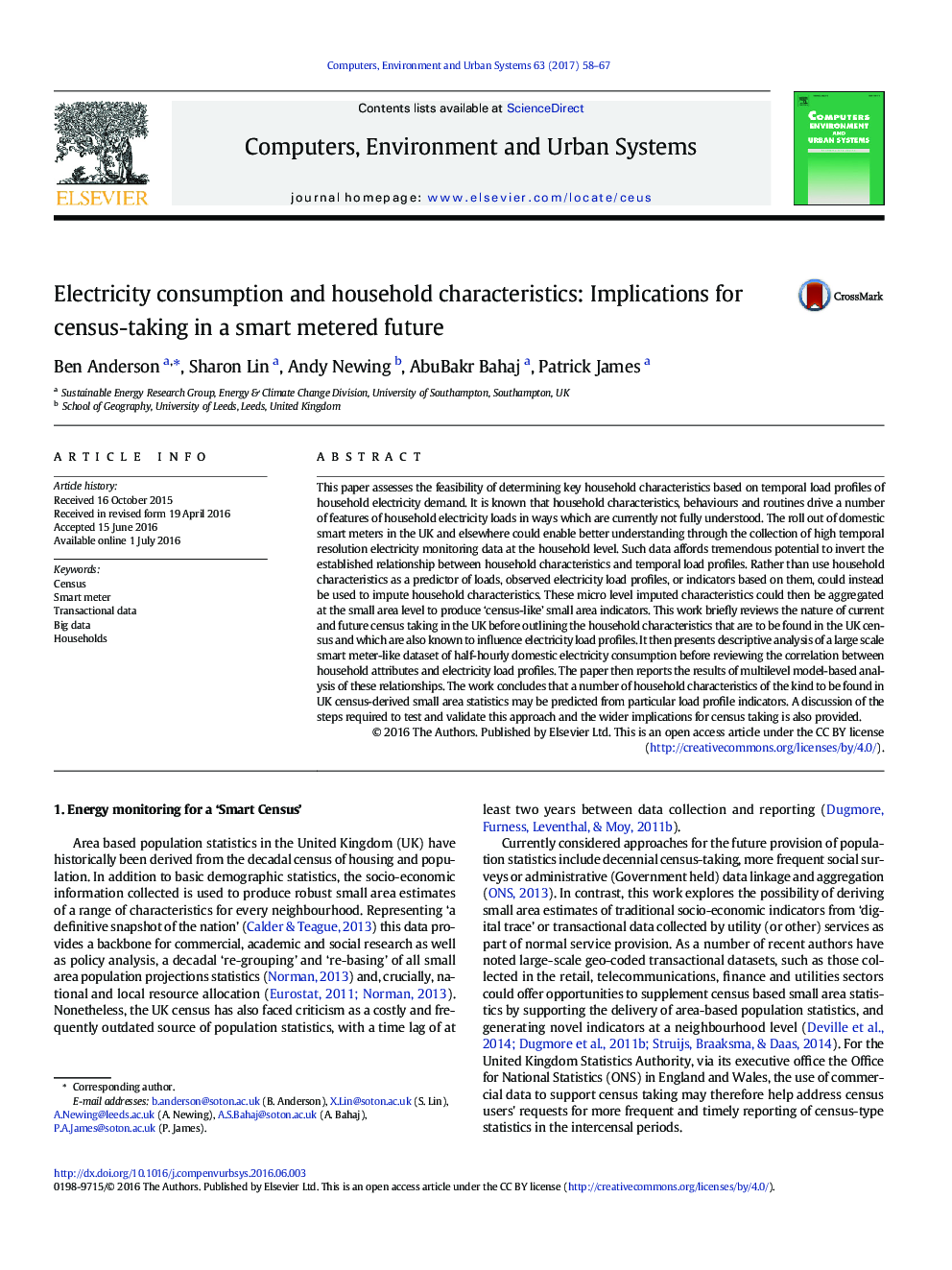| Article ID | Journal | Published Year | Pages | File Type |
|---|---|---|---|---|
| 4965173 | Computers, Environment and Urban Systems | 2017 | 10 Pages |
â¢Temporal electricity consumption patterns (profiles) are known predictors of some household characteristics.â¢Such patterns could be used to estimate census characteristics.â¢Results suggest standard profile indicators can predict employment status.
This paper assesses the feasibility of determining key household characteristics based on temporal load profiles of household electricity demand. It is known that household characteristics, behaviours and routines drive a number of features of household electricity loads in ways which are currently not fully understood. The roll out of domestic smart meters in the UK and elsewhere could enable better understanding through the collection of high temporal resolution electricity monitoring data at the household level. Such data affords tremendous potential to invert the established relationship between household characteristics and temporal load profiles. Rather than use household characteristics as a predictor of loads, observed electricity load profiles, or indicators based on them, could instead be used to impute household characteristics. These micro level imputed characteristics could then be aggregated at the small area level to produce 'census-like' small area indicators. This work briefly reviews the nature of current and future census taking in the UK before outlining the household characteristics that are to be found in the UK census and which are also known to influence electricity load profiles. It then presents descriptive analysis of a large scale smart meter-like dataset of half-hourly domestic electricity consumption before reviewing the correlation between household attributes and electricity load profiles. The paper then reports the results of multilevel model-based analysis of these relationships. The work concludes that a number of household characteristics of the kind to be found in UK census-derived small area statistics may be predicted from particular load profile indicators. A discussion of the steps required to test and validate this approach and the wider implications for census taking is also provided.
